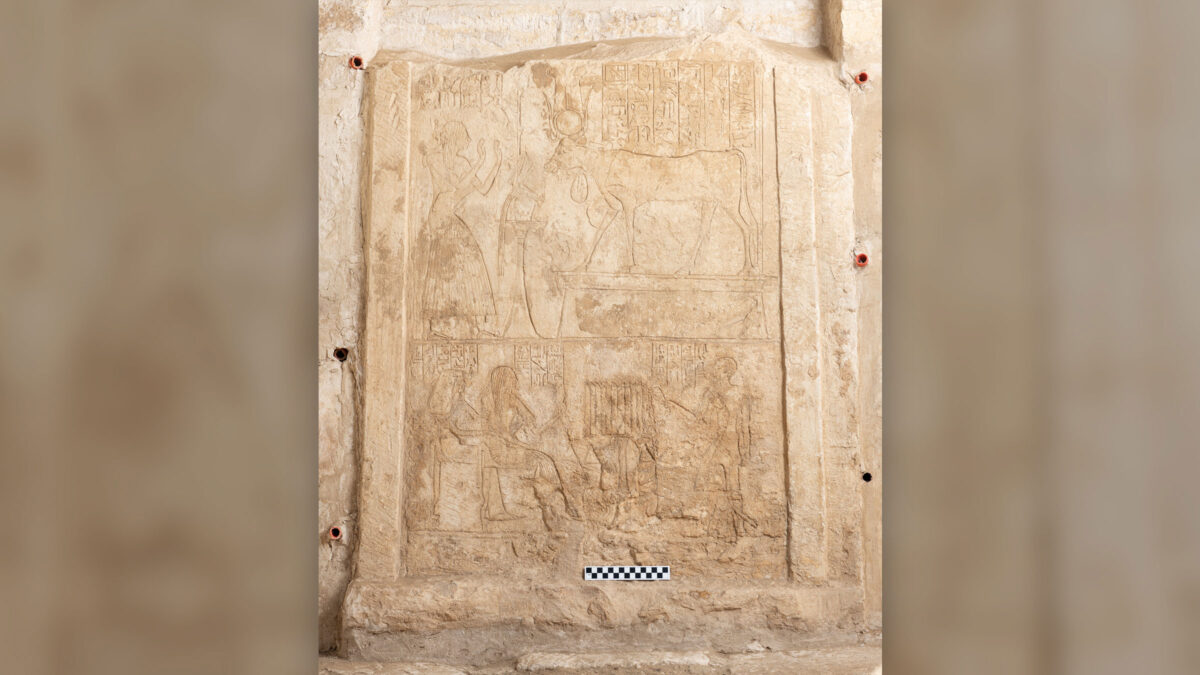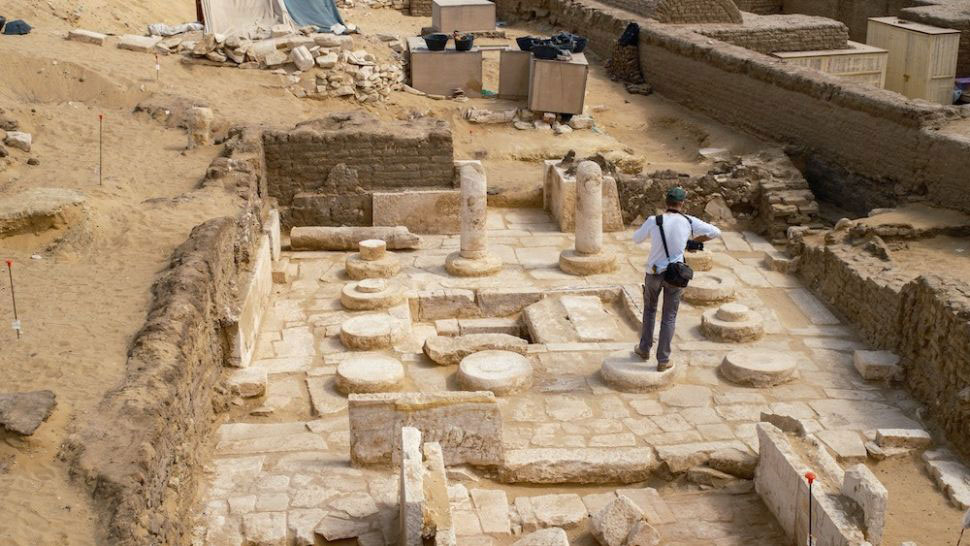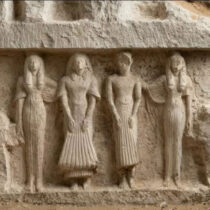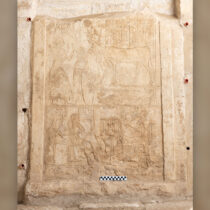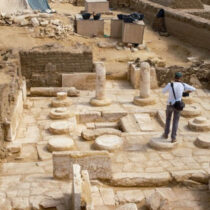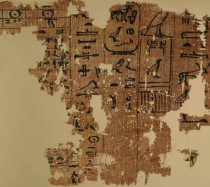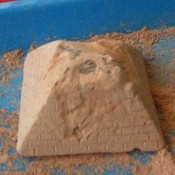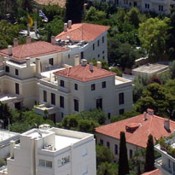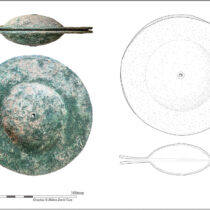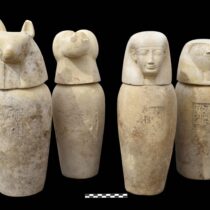New archaeological find was discovered in the necropolis of Saqqara, 30 km south of Cairo. Archaeologists of the Egyptian Museum of Turin, the Egyptian Ministry of Antiquities and the National Museum of Antiquities in Leiden, under the direction of Christian Greco (Director of the Egyptian Museum of Turin) and Lara Weiss (curator of the Collection Egyptian and Nubian from the Leiden Museum), have unearthed the remains of the tomb of
Panehsy, a man responsible for the temple of Amun. The tomb dates back to the early Ramesside period (1250 BC). The archaeological expedition has also brought to light several funerary chapels.
The discovery sheds new light on the development of the Saqqara necropolis in the Ramesside period. Saqqara is the necropolis of the ancient Egyptian capital Memphis, which according to Egyptian tradition was founded in 3000 BC by King Menes, the first pharaoh of united Egypt. Panehsy’s tomb is in the form of a temple, with a monumental entrance and a courtyard with a colonnaded portico. At the center of the courtyard there is a well that gives access to the
underground burial chambers. Along its west side, the court has three chapels. The rectangular funerary complex, measuring 13.4m by 8.2m, borders to the south with the famous tomb of Maya, a high official responsible for the treasure of Pharaoh Tutankhamun. The adobe walls of Panehsy tomb’s superstructure are still standing and reach a height of 1.5 m. and are decorated by limestone slabs set as orthostats. The face of these orthostats are carved with
colored reliefs where the tomb owner Panehsy, his wife Baia, singer of Amun, and several priests and offering bearers may be recognised. Panehsy’s name means the “Nubian”, but this is not necessarily an indication of his origins. With the addition “from Memphis”, Panehsy seeks to underline his bond with this city, an important administrative and religious center of his time, and therefore, the place where he was born.
The name Panehsy was relatively common at that time, but this specific one, who was in charge of the temple, and who came from Memphis, was unknown to scholars to this day. The most beautiful representation of Panehsy is the one where he is in a state of adoration of the goddess Hathor, represented in her typical iconography of a cow coming out of the mountain. Below, Panehsy and his wife Baia sit together before a table. A bald man with a leopard skin around his shoulders faces the deceased couple and pours a libation of water. It is the priest in charge of their funerary cult. The hieroglyphic text identifies the priest as Piay, the scribe of the sacrificial table and probably second in line after Panehsy. It was not that unusual for Piay to have been involved in the funerary cult of his superior, since, ideally this task fell to the eldest son of the deceased. Still, it is possible to hypothesize that Panehsy had no children.
To the east of Panehsy’s tomb, Italian, Egyptian and Dutch archaeologists discovered four smaller funerary chambers. One of them belonged to Yuyu, the craftsman responsible for the production of gold plates for the Pharaoh's treasury. Yuyu’s chapel measures just 1m by 1.15m but the decorations and details of the wall decoration are still fascinating. In this burial chapel, four generations of Yuyu’s family were represented in beautiful colored reliefs. One may see the funeral procession of Yuyu and the ritual of opening the mouth, the supreme moment of the funeral, in addition to the veneration of the cow goddess Hathor and the ceremonial bark of Sokar, the local god of Saqqara. Another noteworthy find in the area east of Panehsy’s tomb is a chapel of a person whose name is not known. The tomb has a rare depiction of the owner and his family, in an artistic style inspired by the statues near the tomb of Maya and Merit.
“The excavation at Saqqara, begun in 1975 by the Egypt Exploration Society and the National Museum of Antiquities of Leiden, aims at the archaeological recontextualization of monuments, reliefs and statues, which ended in European collections in the 19th century. In 2015 the Egyptian Museum became a partner of the mission. Archeology today aims at reconstructing the biography of these objects, so that we can better understand their economic and social history of ancient Egypt. The discovery of the chapel of Yuyu is a tangible example of this, as the door jambs originating from this monument and preserved today in the Musée de Picardie in Amiens can finally be understood and contextualized,” said the Director of the Egyptian Museum, Christian Greco.

